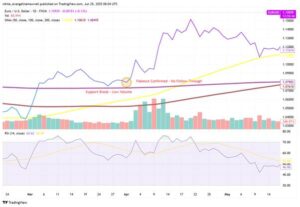Ever wonder why the stock market reacts so strongly when someone from the US Federal Reserve speaks? Or why the value of the euro shifts after a decision from the European Central Bank (ECB)? That’s the power of central banks – institutions that might seem far removed from everyday life, but actually have a big say in how much we pay on our mortgages, how expensive groceries get, and whether the economy runs hot or cold.
So, what exactly is a central bank?
Think of a central bank as the economy’s behind-the-scenes operator. It’s not the kind of place where you’d open a savings account – instead, it works with other banks, setting the rules around money and interest rates that ripple out to affect all of us. In simple terms, it decides how easy or hard it is to borrow money, and by extension, how fast or slow the economy should go.
The US has the Federal Reserve (the “Fed”), Europe has the ECB, Japan has the Bank of Japan (BoJ), and the UK relies on the Bank of England (BoE). These are the biggest players, but almost every country has one. Their mission is largely the same: keep inflation under control and support economic growth.
How do they do that?
The main way central banks influence the economy is by adjusting interest rates – basically, how expensive it is to borrow money. When prices are rising too quickly (that’s inflation), they make borrowing costlier to cool things down (like what happened post-Covid). But if the economy’s dragging its feet, they do the opposite: cut rates to make loans cheaper, hoping people and businesses will spend more.
But rate changes aren’t always enough. In bigger emergencies – like the 2008 financial crash or the COVID-19 shock – central banks roll out a tool called “quantitative easing.” That’s just a technical way of saying they create money and use it to buy things like government bonds. The goal? Get more money flowing through the system and calm panicked markets.
When the financial system hits a rough patch – like a sudden panic or a credit crunch – central banks can step in as a kind of safety net. This role is called being the “lender of last resort.” In plain terms, if banks run out of cash or lending freezes up, the central bank can quickly inject money to keep things moving. It’s a bit like having an emergency generator during a blackout. You don’t use it every day, but when the lights go out, it can stop the whole system from collapsing.
Real-world examples
Between 2022 and 2023, the Fed raised interest rates fast — from nearly zero to over 5% – in an effort to slow down soaring inflation. That made borrowing more expensive for households and businesses, which helped cool spending but also stirred up market volatility.
The ECB took a similar route, but by 2025, it began cutting rates again as inflation started to ease.
Even BoJ, which had kept rates near zero for years, made a rare move and nudged them up in 2025 – its first positive hike in a long time.
These shifts didn’t just stay local. When the Fed raises rates, for instance, the US dollar tends to strengthen – making American exports pricier and affecting global commodity prices.
Why do investors care so much?
Because central banks set the tone. High rates can hurt stock prices (by squeezing profits and making borrowing costly), but low rates tend to boost markets. Bond investors watch rates even more closely, since yields move in response. Currency traders, meanwhile, track central banks to anticipate where capital will flow next.
Even if you’re not an investor, central bank decisions shape your financial world – from how much your savings earn, to what you’ll pay for a car loan.
Recent Rate Moves – As of June 2025
| Central Bank | Key Rate | Last Decision |
| Federal Reserve (USA) | 4.50% | Held steady (Jun 2025) |
| European Central Bank (Eurozone) | 2.15% | Cut by 0.25% (Apr 2025) |
| Bank of Japan (Japan) | 0.50% | Hiked by 0.25% (Jan 2025) |
| Bank of England (UK) | 4.25% | Cut by 0.25% (May 2025) |
Final Thought
They don’t make front-page news every day, but central banks are behind a lot of what moves markets – and money. If you’re investing, borrowing, or trying to make sense of the economy’s ups and downs, understanding what these institutions actually do – and why their decisions matter – gives you an edge. It’s not just policy. It’s the backdrop to everything.




